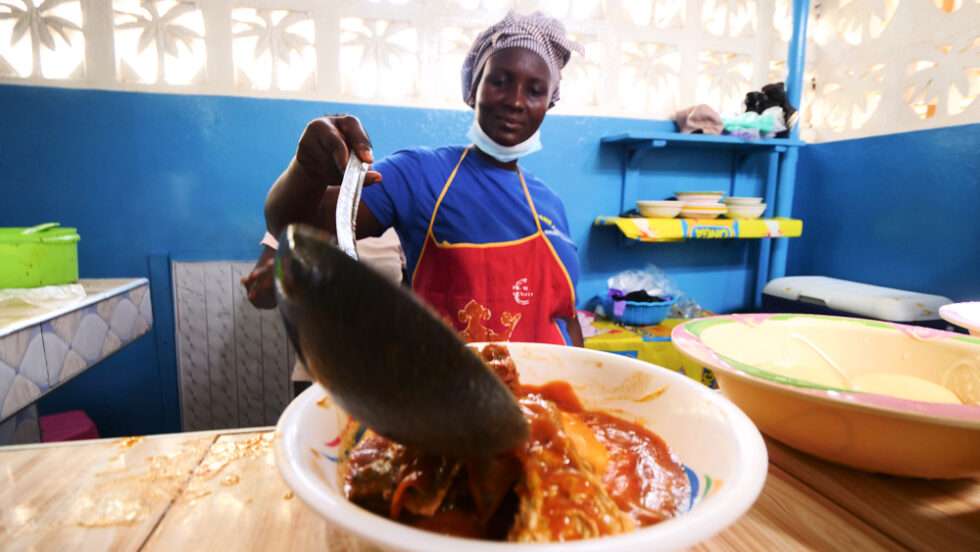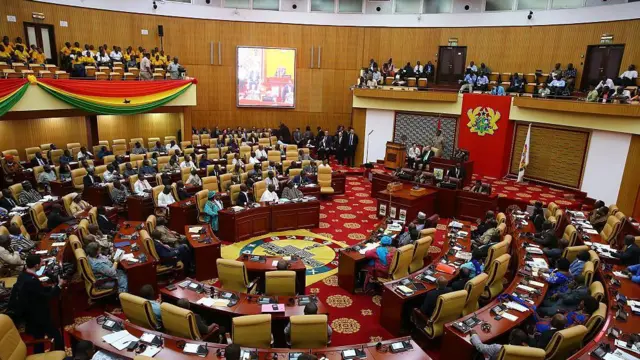1.0 Introduction
The global economy faces a trilemma of issues namely, climate change, poverty and inequality, and food insecurity which are posing existential threats to countries across the globe. There are strong inter linkages between these phenomena, which are not merely correlational but also indicate causality. Estimates suggest that food insecurity is rising at an exponential rate and could escalate even further without timely interventions on a global scale. With barely eight years more to go to meet the 2030 deadline and end hunger, food insecurity, and malnutrition in all of its forms, there is still much to be desired.
Already, the impact of the covid-19 pandemic and the escalating geopolitical tensions between Russia and the West has regressed gains made in ensuring the SDG goal 2 is realized. In 2021 alone, an estimated 29.3 percent of the global population– 2.3 billion people– were moderately or severely food insecure, and 11.7 percent (923.7 million people) faced severe food insecurity. International bodies and organizations such as the FAO and WTO among others being aware of this issue have held conferences to discuss measures that can be put in place to combat food insecurity in the world.
Food insecurity in the broad sense is the unavailability of food for consumption. According to the United States Department of Agriculture (USDA), it is a household level economic and social condition of limited or uncertain access to adequate food. Food insecurity has been categorized into two parts with new labels:
- Low food insecurity (old label: food insecurity without hunger): It consists of reports of reduction in the quality, quantity, variety and desirability of diet. There is little or no indication of reduced food intake.
- Very low food insecurity (old label: food insecurity with hunger): It consists of reports of several indications of inconsistent eating patterns and reduced food intake.
2.0 Causes of Food Insecurity
There are many factors that contribute to food insecurity in the world. One of the root causes could be tied to the rapid growth of the global population and urbanization. In a report documented by the UNDESA, the world’s population is projected to reach 8billion people on November 15, 2022 from 7.753 billion people in 2020. Due to an increase in global population, food consumption rates have increased and the level of food consumption that was hitherto sufficient for the existing population is rapidly becoming insufficient. This means more mouths are required to feed with the same amount of food available, leading to food shortage or reduction in the quantity and quality of food.
Food insecurity worsens due to the occurrence of wars, violence and conflicts among countries. Director General of the United Nations FAO, Beth Bechdol, highlighted that the risks posed by the ongoing war to Russia and Ukraine, as well as the crescendo effect of same on other countries, especially developing economies.
Likewise, Bechdol noted that the war has virtually brought trading activities to a stand-still and these two countries in question are major exporters of wheat, oilseeds and fertilizers to about 26 countries in the world. This has therefore led to rising inflation across several economies; both developed and developing alike, high commodity prices, supply chain disruptions, among others. Countries that have strong buffers to weather the storm are likely to face prolonged balance of payment problems, foreign exchange problems and eventual food insecurity issues.
Climate change also contributes hugely to the negative externalities of food insecurity. It is without doubt that climate change has adverse effects on food insecurity, and its devastating consequences are evident in terms of crop yields, changes in rainfall patterns, and rise in sea levels, among others. Commercial and small-scale farmers decry lower crop yields due to climate change effects.
Cases of severe drought have become commonplace with many farmers reporting low yields. For countries that have majority of their population employed in the agricultural value-chain, there is a likelihood of such persons falling into extreme poverty and being food insecure. This is due to the fact that small scale farmers depend solely on the weather when cultivating their crops. As a result of low yields, these farmers tend to cultivate crops only for their consumption and survival, leaving the masses that depend on them for food with nothing to feed on. These masses eventually add up to the already existing number of food-insecure people.
Though not attached the needed global attention, food wastage is a factor that contributes to food insecurity. Often times, during bumper harvests, farmers encounter problems regarding finding proper storage. Some farmers lack the requisite storage facilities to store their yields and as a consequence lose some of their yields to pest infestation and food spoilage due to their perishability.
A quintessential example is that during the COVID– 19 pandemic, where governments announced stay-at-home and lockdown measures which prolonged throughout the year, some farmers had no choice than to throw away excess food crops because restaurants and companies who purchased them were out of work, thus rendering harvested yields to go bad on farms.
3.0 Risks of Food Insecurity in Ghana
In Ghana, about 44.7% of the workforce are employed in the agriculture sector, farming, forestry and fisheries sectors. Albeit unfortunately, the 2020 Comprehensive Food Security and Vulnerability Analysis (CFSVA) shows that 3.6 million people were reported as being food insecure. Of this number, 1.6 million people are severely food insecure and 2 million people are moderately food insecure.
This indicates the extent to which Ghana is close to being food insecure in the event of maintaining the status quo without a calculated course correction. This, thus opens the country to other multifaceted risks which in turn could take years to recalibrate the economy. The following are the risks Ghana is likely to face due to food insecurity.
- Poverty and severe hunger of the people.
- Increase in food prices
- High health related costs
- Occurrence of conflicts
- Insufficient human resource for development.
However, these risks can be prevented if some existing systems put in place to check food insecurity are improved. Currently in Ghana, there are three policies asides other policies and projects put in place to combat food insecurity in the country. They are:
- Comprehensive Food Security and Vulnerability Analysis (CFSVA)
- Planting for Food and Jobs
- One District One Factory Project.
The CFSVA is a project by the Government of Ghana and the United Nations to identify, analyze and address conditions that give rise to food insecurity and undernourishment. It was created to replace the Food Security and Nutrition Monitoring System (FSNMS) whose scope of research and data collection on food insecurity was only in 32 districts out of the country’s 216 districts. The CFSVA was created to cover a wider region, that is, 60 districts of the 216 districts. Its objectives are as follows;
- Identify where, when, and who Ghana’s food insecure are, as the basis for remedial policy action to tackle food insecurity, including targeting of Food and Nutrition Security (FNS) social protection programs, and building disaster preparedness and response capabilities.
- To initiate preliminary analysis on the unprecedented dataset generated by the CFSVA to investigate explanations of food insecurity outcomes.
- To evaluate key thematic issues in the contemporary context, including the impact of COVID-19 and other shocks, and the impact of food insecurity on women empowerment and child nutrition.
Based on these objectives, MoFA has been able to assess the level of food insecurity and undernourishment in the country statistically and hopefully is working on creating, implementing and improving policies to reduce the level of food insecurity in the country.
The Planting for Food and Jobs (PFJ) program was launched by His Excellency Nana Addo Dankwa Akufo Addo in April 2017. It was put in place to facilitate the transformation of Ghana’s Agriculture. It consists of five implementation modules namely, Food Crops (PFJ), Planting for Export and Rural Development (PERD), Greenhouse Technology Villages (3 Villages), Rearing for Food and Jobs (RFJ) and Agricultural Mechanization Services (AMSECs). The following are the objectives of the PFJ
- To ensure immediate and adequate availability of selected food commodities.
- To provide job opportunities for the teeming unemployed youth in the agriculture and allied sectors.
- To create general awareness for all formal workers and public institutions to farm and establish backyard gardens.
- To serve as food imports substitution.
The approach of implementation adopted to make this project feasible are to motivate farmers to use input and output markets and to create employment opportunities along commodity value chains. The mode of motivation is through provision of subsidies of 50% on seed and fertilizer, provision of effective extension services and marketing of outputs.
The One District One Factory programme was initiated by His Excellency Nana Addo Dankwa Akuffo Addo. The mission of this program is;
- Identify and create business opportunities in the districts, harnessing the strengths and resources of the locals in an efficient technology and demand driven value chain.
- Aiming to equip and empower communities to utilize their local resources in manufacturing products that are high in demand, both locally and internationally.
Its vision is to change the nature of Ghana’s economy from one which is dependent on import and export of raw materials to one which is focused on manufacturing, value addition, and export of processed foods. It is a private sector led initiative, meaning that Ghanaian entrepreneurs will own these factories or companies, bearing all the risks and benefits that arise from their operations. In so doing, the government will assist them by creating the necessary and conducive environment to access funding from financial institutions and other support services from Government agencies to establish these factories (1D1F, 2020).
Mr. Michael Okyere Baafi, Deputy- Minister of Trade and Ministry in an interview with the Ghanaian Times stated that so far, 106 out of 278 factories have been put up and are currently in operation and has brought about 150,000 direct and indirect jobs for the unemployed youth of the country. He further added that, companies under the 1D1F program are exempted from the country’s corporate tax of 5% for 5 years and also from the payment of import taxes on the raw materials for production as well as machinery.
4.0 Conclusion and Recommendations
As a tested approach, the government should widen the support provided farmers in order to protect their livelihoods and sustain their families in order to incentivise farmers to increase crop yield. While efforts are being geared towards this, they are marginal and are less likely to yield the scaled impact expected.
According to MoFA, the PFJ program enrolled about 1,183,313 farmers into the program in 2019, however, considering the number of food insecure people in the country, a lot more can be done on this front. Farmer incentives should be increased in these critical moments, especially for those enrolled into the PFJs program, as reports show that some farmers have resorted to selling of their farm lands to galamseyers.
Similarly, per a review of the PFJ program, Ghanaian farmers have been limited to NPK 15-15-15 fertilizer been distributed throughout the country despite regional variations in soil fertility and types (Chapoto & Tetteh, 2014). Such a situation should be corrected in order for farmers to grow healthy crops that meet international standards. Attention should be focused on the conduct of research on the various types of soils in the various regions and the kind of fertilizer required to cultivate crops in those regions. By doing this, government will be able to provide the required fertilizers for farmers across the country.
Additionally, the quality of fertilizer provided to farmers must meet international standards. Robust systems should be put in place to prevent individuals from re-routing these fertilizers meant for farmers. A Government-funded study in 2015 found that less than one -third fertilizer samples tested conformed to technical requirements (GoG, 2015). Effective and intensive checks should be run on fertilizers before being sent out for distribution to farmers. Farmers should be educated on how to prepare organic and bio fertilizers which are eco-friendly for usage on their farms to reduce the excessive emission of greenhouses gases as a result of the use of too much chemical fertilizers.
Research Centres in charge of conducting research on seeds and crops grown in Ghana should include conducting of intense research on nutritious underutilized crops that can be cultivated on large scale in the country. Example of such a crop is the Bambara groundnut. It is a crop that has a high amount of essential amino acids required for optimum growth in humans. This crop, if grown on a large scale can be processed into fortified foods to provide and improve nutrition of pregnant and breastfeeding women as well as children. Also, the government must take advantage of modern green financing and prioritize massive investments into the agriculture sector as well as curb the adverse impact of galamsey that is currently posing ominous threats to farming activities in the country.
By Constance Terkutei, & Stephen Asare Abankwah




















